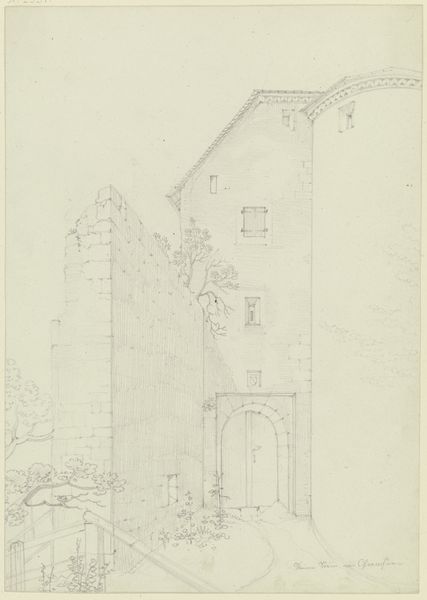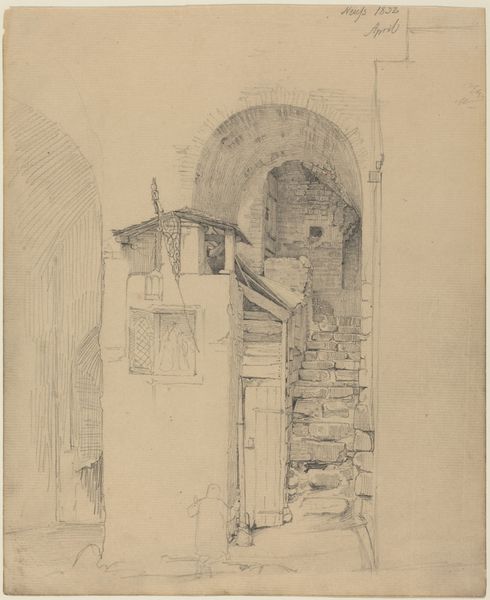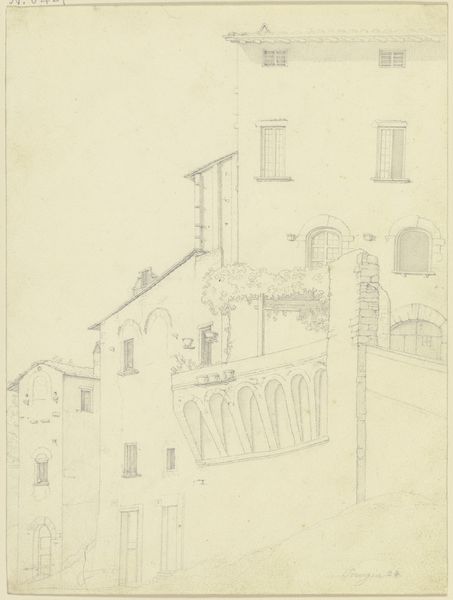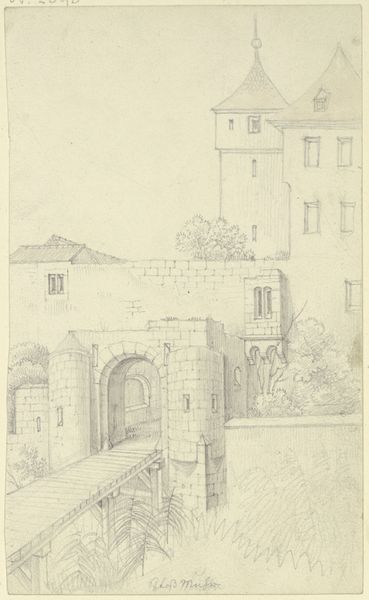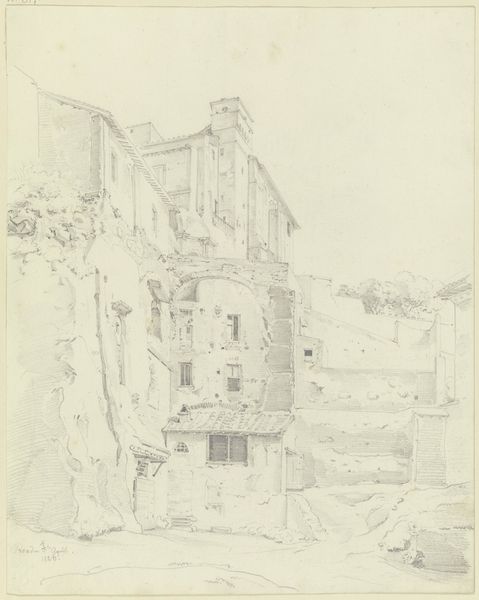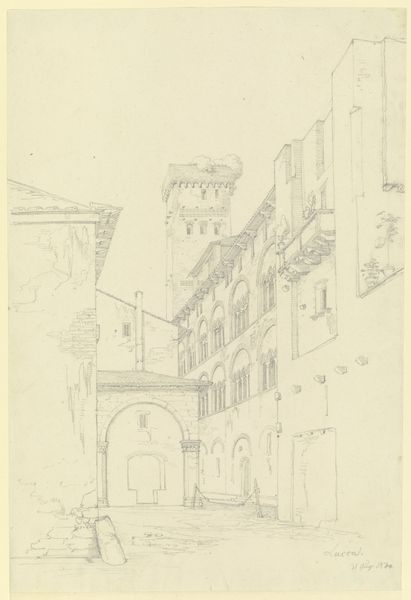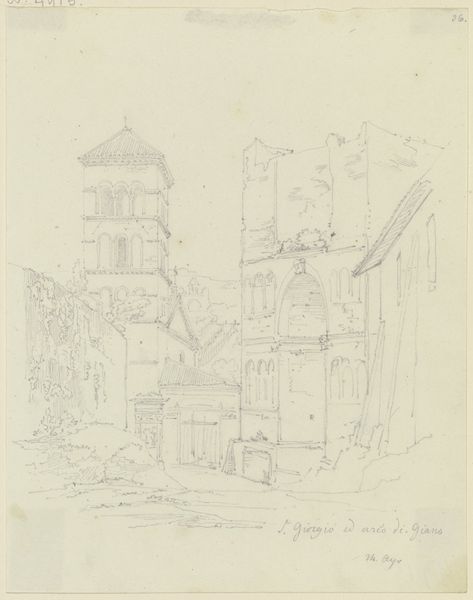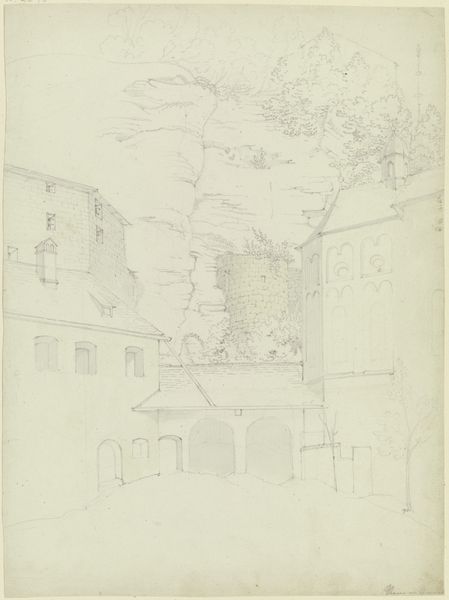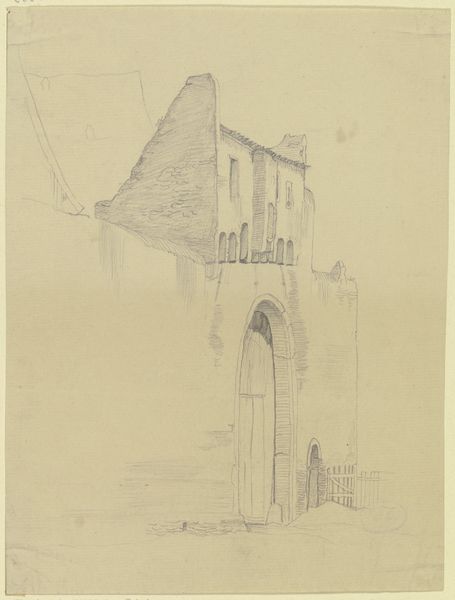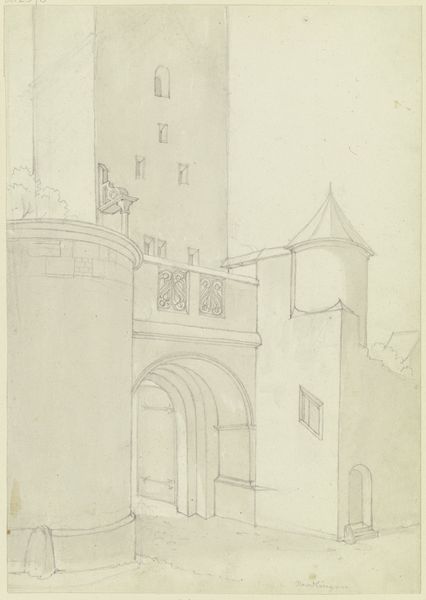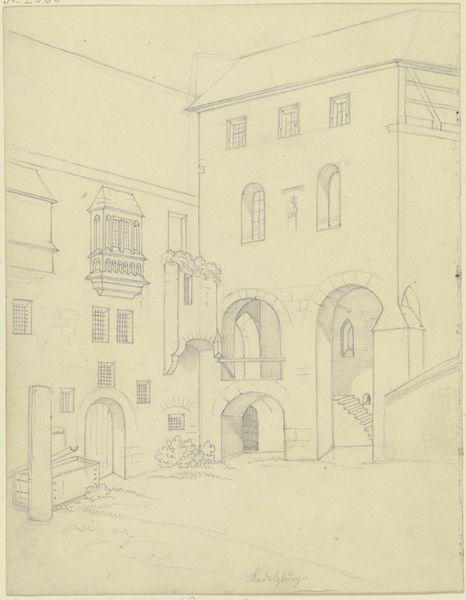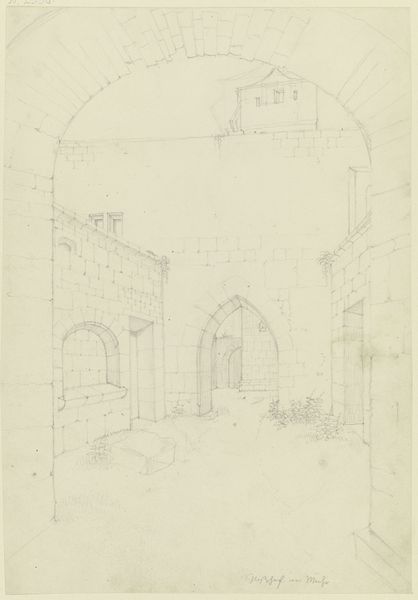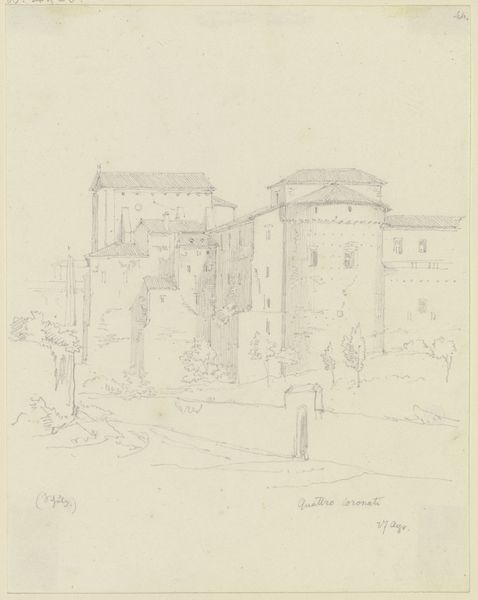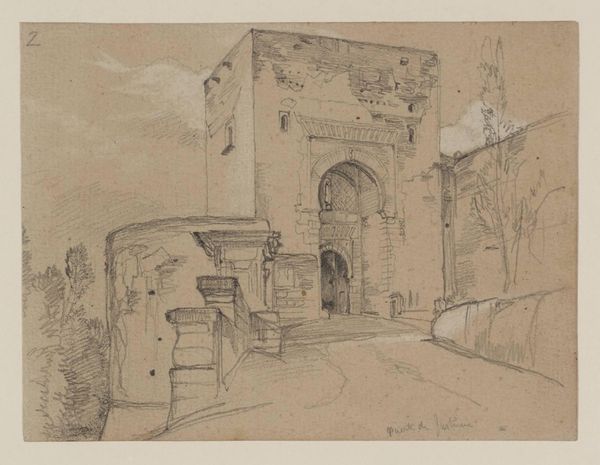
Copyright: Public Domain
Editor: Here we have Friedrich Maximilian Hessemer’s "The Porta Leone in Rome," a pencil and paper drawing from 1824-1828. I find it evokes such a serene, almost wistful mood. What catches your eye, considering the period it was created? Curator: This drawing, like many Romantic depictions of Rome, needs to be seen in the context of the Grand Tour. Hessemer is not just capturing the Porta Leone; he’s participating in a long tradition of Northern European artists studying and idealizing classical antiquity. How do you think the accessibility of these images shaped public perceptions of Rome at the time? Editor: That's interesting, it highlights the social impact that it could have, making these places more attractive for travelers perhaps, shaping trends... the light in this picture feels very even though. Not particularly romantic in terms of intense dramatic contrasts. Curator: Indeed. Its almost archaeological precision and subdued tonality, speak to the developing fields of art history and historical preservation at the time. Think about the museums that began collecting and displaying these types of drawings. How did that contribute to a sense of national cultural heritage? Editor: So, while seemingly a simple cityscape, it's intertwined with the development of institutions, even the idea of a cultural identity linked to architectural history. Curator: Exactly! And what do you think a drawing like this might mean for a rising, 19th-century German nationalist movement? Editor: Fascinating, I hadn't considered the link between art, nationalism, and even the rise of museums as interconnected cultural forces. Curator: It shows how art reflects, and sometimes fuels, broader social and political shifts. Editor: Thanks, I’ll never look at another cityscape quite the same way!
Comments
No comments
Be the first to comment and join the conversation on the ultimate creative platform.
